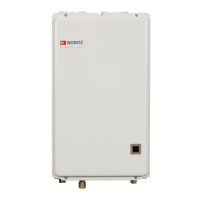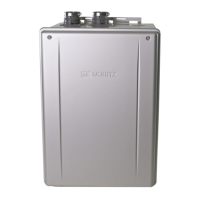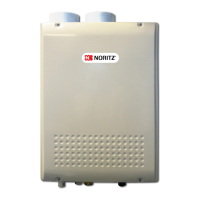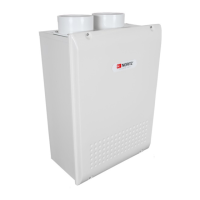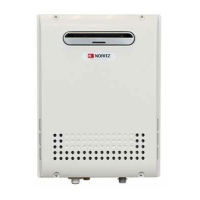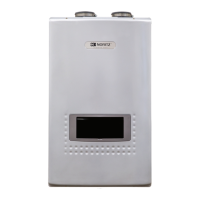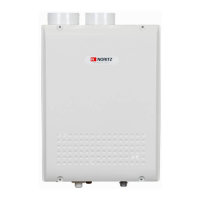8
Thecondensingtanklessgaswater
heaterdischargescondensate.
When heat from the exhaust gas is collected within
the secondary heat exchanger, condensation occurs
from moisture in the exhaust gas and the resulting
water is discharged from the drain pipe (approx.
0.8
gallons/hour (3 liters/hour) maximum). It is not a
water leak. Do not plug or block the drain line as it
must always be allowed to freely ow.
Note : The condensate discharged is acidic with a pH
level of approximately 2-3.
A condensate neutralizer may be required by
local code prior to disposal.
Drain pipe
(Installation example)
OverviewofCondensingTanklessGasWaterHeater
This water heater is a high efciency, fully condensing appliance. Unlike a traditional tankless water
heater, a condensing type captures heat from the exhaust gas and uses it to preheat the incoming
cold water as it passes through the secondary heat exchanger as illustrated below.
Thecondensingtanklessgas
water heater tends to show
whitesteam.
After the exhaust gas passes through the
secondary heat exchanger, the low temperature
and high moisture content tends to produce
steam at the vent discharge terminal.
This is a normal occurrence.
Condensate comes
out from here.
Gas
Gas
Hot water
Hot water
Condensate
Combustion gas
About
400˚F (200˚C)
Exhaust Exhaust
About
140˚F (60˚C)
Conventional
type
Condensing
Tankless Gas
Water Heater
Water is heated
using the exhaust
gas which is about
400˚F (200˚C)
.
Primary heat exchanger
Primary heat exchanger
Secondary heat exchanger
condensate trap
Combustion gas
About
400˚F (200˚C)
About
400˚F (200˚C)
During combustion, white
steam may often be seen.
This is normal.

